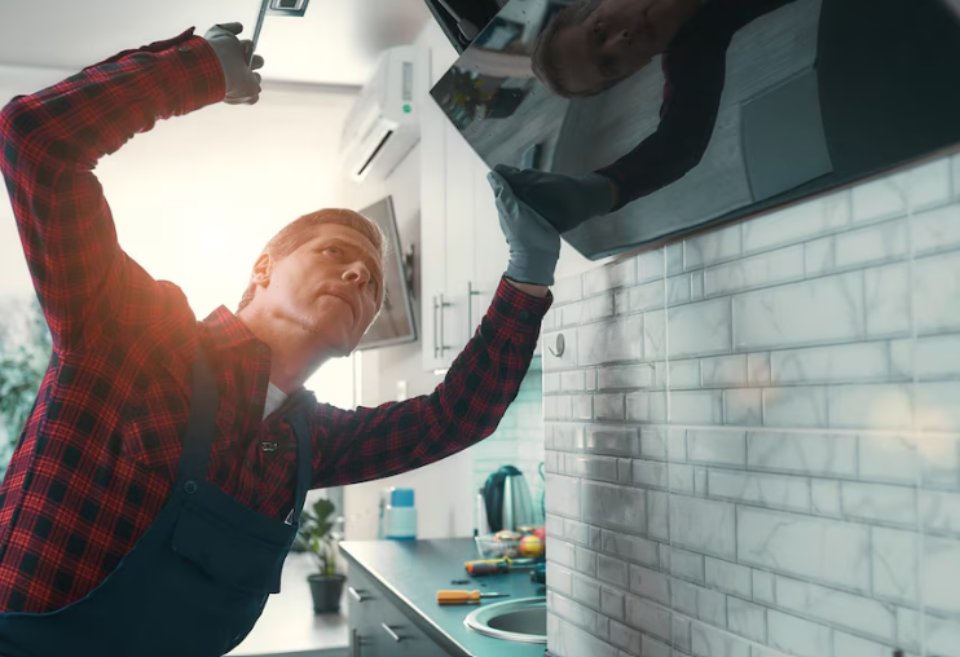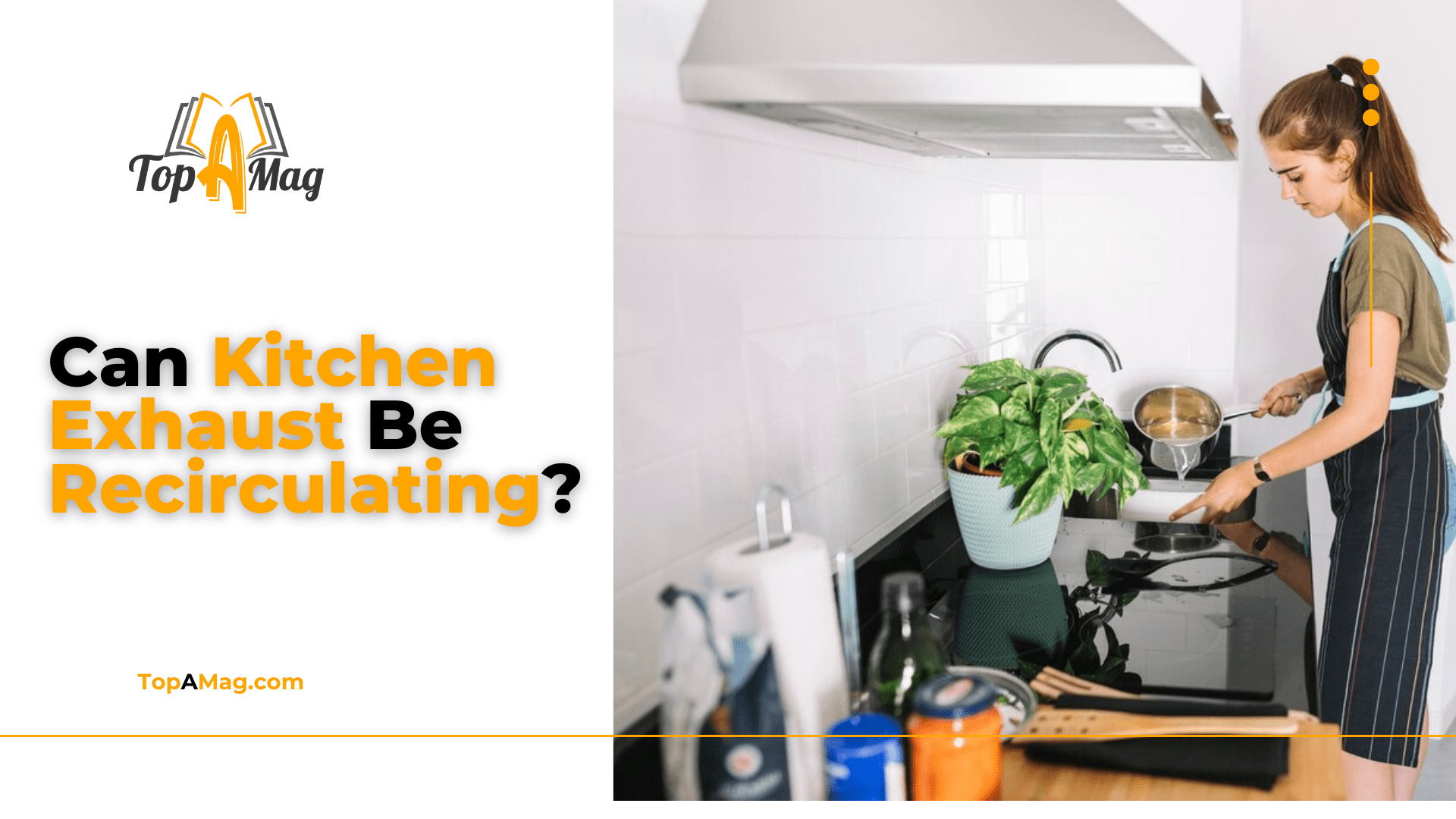In the heart of every home, the kitchen is not just a place for culinary creation but also a hub for family gatherings and social interactions. However, with all the cooking and baking, the kitchen can become a hotspot for smoke, odors, and airborne grease. This is where a kitchen exhaust system becomes indispensable. Traditionally, these systems vent air outside, but what if your kitchen setup doesn’t allow for this? Can kitchen exhaust be recirculating? Let’s delve into this intriguing topic.
Key Takeaways
- Recirculating kitchen exhaust systems are ideal for homes where ductwork is impractical.
- They offer ease of installation, energy efficiency, and cost savings.
- Regular filter maintenance is very essential to ensure high-quality performance.
- While not as effective as ducted systems in removing smoke and strong odors, modern recirculating systems with advanced filters are continually improving.
Understanding Recirculating Kitchen Exhaust Systems
Recirculating kitchen exhaust systems, also known as ductless range hoods, work by drawing in air, filtering it, and then recirculating the cleaned air back into the kitchen. Unlike traditional vented systems, they do not expel the air outside. Instead, they rely on a series of filters to remove contaminants.
How Do Recirculating Systems Work?
At the core of a recirculating system are two main types of filters: charcoal filters and grease filters. Grease filters capture airborne grease and oil particles, while charcoal filters neutralize odors and smoke. The process begins with the Best Range hoods pulling air through the grease filter, then through the charcoal filter, before releasing it back into the kitchen.
Advantages of Recirculating Kitchen Exhaust Systems
- Installation Flexibility: One of the primary advantages of recirculating systems is their ease of installation. Without the need for ductwork, these systems can be installed in virtually any kitchen, making them ideal for apartments and condos.
- Energy Efficiency: Since these systems do not expel heated or cooled air outside, they can be more energy-efficient, helping to maintain the kitchen’s temperature.
- Cost-Effective: Typically, recirculating hoods are less expensive than their ducted counterparts, both in terms of initial cost and installation.
Challenges of Recirculating Kitchen Exhaust Systems
Despite their advantages, recirculating systems do come with certain limitations:
- Filter Maintenance: The filters in a recirculating system need regular maintenance. Grease filters should be cleaned frequently, and charcoal filters need to be replaced every few months.
- Efficiency in Smoke and Odor Removal: While recirculating systems are effective at removing grease and some odors, they may not be as efficient as ducted systems in eliminating smoke and strong cooking smells.
- Noise Levels: Some users report that recirculating hoods can be noisier than ducted systems due to the extra filtration process.
Comparing Recirculating and Ducted Kitchen Exhaust Systems
When deciding between a recirculating system and a ducted system, it’s essential to consider your kitchen’s layout and your specific needs. Ducted systems, which expel air outside, are generally more effective at removing smoke, odors, and airborne particles. However, they require an exterior vent, which can be a significant constraint in many homes.
Performance and Air Quality
In terms of performance, ducted systems typically offer superior air quality. They remove contaminants completely from the kitchen, whereas recirculating systems filter and reintroduce air. For serious cooks or those with open-plan living spaces, a ducted system might be preferable.

Installation and Maintenance
Installation is a key consideration. Ducted systems require a more complex installation process, involving ductwork and an exterior vent, which can be costly and sometimes impractical. On the other hand, range hood systems are simpler to install and can be placed almost anywhere.
When installing the Exhaust systems, we suggest you add designs on your exhausts. This can help you add texture to your kitchen and make it look even more beautiful.
Maintenance is another factor. While ducted systems primarily need the ductwork kept clean and the exhaust fan maintained, recirculating systems require regular filter changes. Neglecting filter maintenance can significantly reduce their efficiency.
Choosing the Right System for Your Kitchen
Selecting the right exhaust system depends on various factors, including kitchen size, cooking habits, and whether your kitchen can accommodate ductwork. Here are some considerations:
- Kitchen Layout: If your kitchen is small or lacks an external wall for ductwork, a recirculating system might be the best option.
- Cooking Frequency: For those who cook frequently, especially dishes that produce a lot of smoke and strong odors, a ducted system could be more effective.
- Budget: Budget constraints can also influence your choice. Recirculating systems are generally more affordable both in terms of purchase and installation costs.
Enhancing the Efficiency of Recirculating Systems
While recirculating systems might not match the raw efficiency of ducted systems, several strategies can enhance their performance:
- Regular Filter Maintenance: Clean grease filters regularly and replace charcoal filters as recommended by the manufacturer.
- Adequate Ventilation: Ensure that your kitchen has adequate ventilation. Use windows and doors to facilitate air movement.
- Supplementary Fans: Consider using supplementary fans to improve air circulation within the kitchen.
Innovations in Recirculating Kitchen Exhaust Systems
The technology behind these range hoods systems is continually evolving. Modern systems feature advanced filtration technologies, quieter operation, and improved efficiency. Some high-end models come equipped with smart sensors that adjust the fan speed based on the air quality in the kitchen.
Environmental Impact
People often consider recirculating systems more environmentally friendly due to their energy efficiency. By not expelling conditioned air outside, they can help reduce the overall energy consumption of a household. Additionally, manufacturers are developing more sustainable and longer-lasting filters.
Frequently Asked Questions (FAQs)
1. How often should I replace the charcoal filter in a recirculating system?
Charcoal filters typically need to be replaced every three to six months, depending on usage and manufacturer recommendations. Regular replacement ensures the system remains effective at neutralizing odors and smoke, maintaining good air quality in your kitchen.
2. Can I install a recirculating exhaust system myself?
While it is possible to install a recirculating system yourself, it’s advisable to have a professional handle the installation to ensure it’s done correctly. Professional installation guarantees optimal placement and function, preventing potential issues that could arise from improper setup.
3. Do recirculating systems work well in large kitchens?
Recirculating systems can be effective in large kitchens, but they may need to be supplemented with additional ventilation solutions for optimal performance. Large spaces might require higher-capacity systems or multiple units to adequately handle the volume of air needing filtration.
4. Are there any health risks associated with recirculating kitchen exhausts?
There are no significant health risks if the filters are maintained properly. However, failing to replace or clean filters can reduce air quality. Regular maintenance is essential to ensure that the system effectively removes contaminants from the air, promoting a healthier kitchen environment.
5. How do I know if a recirculating system is working efficiently?
Check for common signs of inefficiency, such as persistent odors, smoke lingering in the kitchen, or unusually noisy operation. Regular filter checks and replacements are crucial. Monitoring these factors can help you identify when maintenance or replacement is needed to keep your system running smoothly.
6. What’s the cost difference between recirculating and ducted systems?
Recirculating systems are generally more affordable both in terms of initial purchase and installation. Ducted systems, while more expensive, can offer better long-term performance. When deciding, consider both the upfront costs and the long-term benefits of each system.
7. Can I convert my existing ducted system to a recirculating one?
Yes, some ducted systems can be converted to recirculating systems by installing the appropriate filters. Consult with a professional to determine if your system is convertible. This flexibility can be advantageous if you move or your kitchen layout changes.
Conclusion
So, can kitchen exhaust be recirculating? Absolutely. Kitchen exhaust systems offer a viable solution, especially for homes where ductwork installation is not feasible. They provide flexibility, cost savings, and improved energy efficiency. However, it’s essential to weigh these benefits against the potential drawbacks, such as maintenance requirements and performance limitations.

